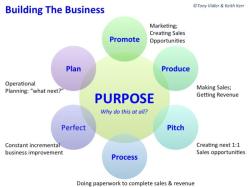How to set up management systems for Your Small Business?
Setting up effective management systems is crucial for the success and growth of a small business. These systems help streamline operations, enhance productivity, and ensure that the business is on track to achieve its goals. Here are steps to set up management systems for a small business, with a focus on organizational setup:
1. Define Your Organizational Structure:
- Clarify the roles and responsibilities of each team member.
- Determine reporting relationships and lines of communication.
2. Establish Clear Goals and Objectives:
- Define short-term and long-term goals for the business.
- Ensure that goals are specific, measurable, achievable, relevant, and time-bound (SMART).
3. Implement an Effective Communication System:
- Choose communication tools (email, messaging apps, project management software) that fit your business needs.
- Set up regular team meetings for updates and feedback.
4. Develop Standard Operating Procedures (SOPs):
- Document processes for key activities within the business.
- SOPs provide a reference point for employees and ensure consistency.
5. Implement Project Management Tools:
- Use project management software to organize tasks and deadlines.
- Assign responsibilities and track progress to ensure projects are completed on time.
6. Establish a Human Resources (HR) System:
- Develop policies for hiring, onboarding, and performance reviews.
- Keep accurate records of employee information and ensure compliance with labor laws.
7. Financial Management Systems:
- Implement accounting software for invoicing, expense tracking, and financial reporting.
- Regularly review financial statements to make informed business decisions.
8. Customer Relationship Management (CRM):
- Use CRM software to manage customer interactions and relationships.
- Keep track of customer preferences, purchases, and feedback.
9. Quality Control and Continuous Improvement:
- Establish processes to monitor and control the quality of products or services.
- Encourage a culture of continuous improvement and innovation.
10. Risk Management:
- Identify potential risks to the business and develop strategies to mitigate them.
- Regularly review and update risk management plans.
11. Employee Training and Development:
- Invest in training programs to enhance the skills of your team.
- Foster a learning culture that encourages personal and professional growth.
12. Data Security and Privacy:
- Implement measures to protect sensitive business and customer data.
- Stay compliant with data protection regulations.
13. Performance Measurement and Key Performance Indicators (KPIs):
- Define KPIs that align with your business goals.
- Regularly assess performance against these indicators.
14. Legal and Regulatory Compliance:
- Stay informed about relevant laws and regulations affecting your business.
- Ensure that your business operations comply with all legal requirements.
15. Feedback and Improvement Loop:
- Establish a system for collecting feedback from employees, customers, and other stakeholders.
- Use feedback to identify areas for improvement and implement changes.
16. Regular Review and Adjustment:
- Regularly review your management systems and adjust them based on changing business needs and feedback.
By systematically implementing these steps, you can create a strong foundation for effective management systems in your small business. Keep in mind that flexibility and adaptability are key, as the business environment is dynamic and may require adjustments over time.
What are the fundamental steps in establishing management systems tailored for small businesses?
Here are the fundamental steps in establishing management systems tailored for small businesses:
1. Define your business goals and objectives.
What do you want to achieve with your business? Once you know your goals, you can start to develop the systems and processes that will help you achieve them.
2. Identify your key business processes.
What are the core activities that your business performs on a regular basis? These might include things like marketing, sales, order fulfillment, and customer service.
3. Map out your business processes.
Create a visual representation of your business processes, such as a flowchart or diagram. This will help you identify any bottlenecks or inefficiencies in your current system.
4. Develop procedures for each business process.
Create written procedures for each of your key business processes. These procedures should detail the steps involved in each process, as well as who is responsible for each step.
5. Implement your procedures.
Train your employees on the new procedures and make sure they are followed consistently.
6. Monitor and evaluate your systems.
Track the performance of your systems and make adjustments as needed.
Here are some additional tips for establishing management systems tailored for small businesses:
- Start small. Don't try to implement too many systems at once. Start with a few key processes and then gradually add more over time.
- Keep it simple. Your systems should be easy to understand and use. Avoid using complex jargon or procedures.
- Use technology. There are a number of software programs that can help you manage your business. Consider using a customer relationship management (CRM) system, a project management system, or an accounting system.
- Get feedback. Ask your employees for feedback on your systems. This will help you identify any areas that need improvement.
- Review and update your systems regularly. As your business grows and changes, you will need to update your systems to reflect those changes.
By following these steps, you can establish management systems that will help your small business run more efficiently and effectively.












